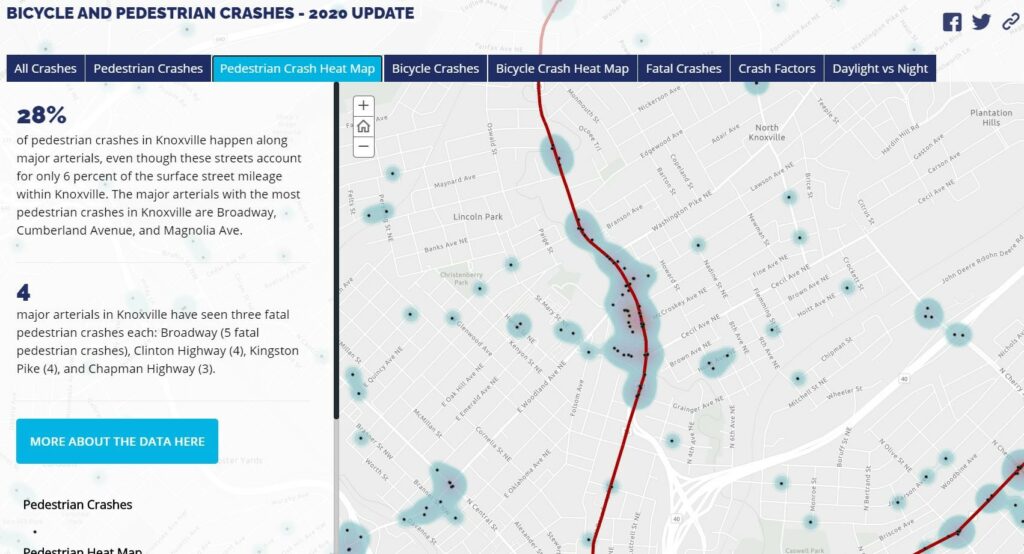In September of 2020, staff from multiple agencies met virtually for a two-day review of pedestrian safety issues along the North Broadway corridor in Knoxville. The TPO’s analysis of pedestrian and bicycle crashes in the region had helped to identify the 1-mile section of Broadway from Hall of Fame Drive to Fairmont Boulevard as a hotspot for traffic crashes involving people walking.
This screenshot from the TPO’s public map shows the cluster of pedestrian-related crashes along this section of Broadway.

The result of these meetings is a Pedestrian Road Safety Assessment Report that is now available for review.
The report outlines near-term, intermediate, and long-term actions that can help increase the safety of people walking along and across this section of Broadway.
Near-term recommendations include:
- Refresh pavement markings and install crosswalks at new locations.
- Landscape vegetation that is obscuring pedestrian visibility.
- Review of intersection signal timing for consideration of protected left turn phasing, right turn on red prohibitions, and other improvements to reduce vehicle turning conflicts.
- Install pedestrian signal heads at signalized intersections and include a lead pedestrian interval (LPI) at those locations with frequent turning vehicle conflicts. Pedestrian signal heads with countdown timers can reduce pedestrian crashes by 25 percent, and LPIs can reduce pedestrian crashes by 13 percent.
Intermediate recommendations include:
- Incorporate coordinated signal phasing in the Advanced Traffic Management System (ATMS) plan.
- Pursue access management improvements to consolidate curb cuts and improve vehicular and pedestrian safety. Begin with temporary measures such as curb stops and flexible delineators.
- Modify intersection geometry to reduce the speed of turning vehicles. These could include reducing turning radii to slow the speed of right turns and hardening center lines to slow left turns. Begin with temporary measures such as flexible delineators, bollards, and pavement markings.
- Improve transit stop infrastructure for those locations with higher ridership to include benches and shelters.
Long-term recommendations include:
- Continue access management and intersection geometric improvements by hardscaping temporary improvements and continuing sidewalks across driveway entrances.
Agencies involved in the process were the TPO, City of Knoxville, Tennessee Department of Transportation (TDOT), Federal Highway Administration (FHWA), Bike Walk Knoxville and a consultant team hired through FHWA.